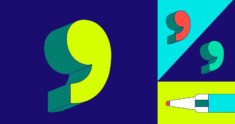
Ever found yourself puzzled by interrogative sentences? You’re not alone.
Interrogative sentences, or question sentences, are a vital part of our daily communication. They help us gather information, express curiosity, and engage in meaningful conversations.
But what exactly are they? How do we form them correctly? And what are the different types of interrogative sentences?
In this article, we’ll dive into the world of interrogative sentences. We’ll explore:
- The purpose of interrogative sentences
- The structure of interrogative sentences
- Rules for forming interrogative sentences
- Types of interrogative sentences
- Common mistakes and tips
So, ready to unravel the mystery of interrogative sentences? Let’s dive in!
What are interrogative sentences?
Interrogative sentences, simply put, are questions. They’re sentences that seek to gather information, clarify a point, or start a conversation.
They often start with a question word like who, what, where, when, why, or how. Alternatively, they can begin with a helping verb for yes/no questions. Regardless of their form, all interrogative sentences share a common trait: They end with a question mark.
The purpose of interrogative sentences
Interrogative sentences serve a crucial role in our everyday communication. They allow us to gather information, clarify misunderstandings, and engage in meaningful conversations.
Whether we’re asking for directions, seeking advice, or simply sparking a chat, interrogative sentences are our go-to tool. They’re not just about asking questions, they’re about connecting with others and understanding the world around us.
The structure of interrogative sentences
Interrogative sentences have a unique structure that sets them apart. They often start with a question word or a helping verb. This is followed by the subject and then the main verb.
For example, in the question “What is your name?”, What is the question word, is is the helping verb, your is the subject, and name is the main verb. This structure helps us identify the sentence as a question.
However, not all interrogative sentences follow this pattern. Some start directly with the subject, especially in informal speech. For instance, “You’re going where?” Here, the subject You comes first, followed by the verb are going and the question word where.
Understanding the structure of interrogative sentences is key to forming correct questions. Let’s delve deeper into the different types of interrogative sentences.
Yes/no questions
Yes/no questions are the simplest type of interrogative sentences. They require a simple “yes” or “no” answer. These questions usually start with a helping verb like do, is, are, can, or will.
For example, “Do you like to write?” or “Can you swim?” Here, the helping verb comes first, followed by the subject and the main verb. This structure is typical for yes/no questions.
“Wh-” questions
“Wh-” questions are a bit more complex. They start with a “wh-” question word like who, what, where, when, why, or how. These questions seek more detailed responses than just “yes” or “no”.
For instance, “Where do you live?” or “Why are you late?” Here, the question word comes first, followed by the helping verb, the subject, and the main verb. This structure helps us gather more specific information.
Alternative questions
Alternative questions offer choices in their structure. They’re like yes/no questions but with more than two possible answers. These questions usually contain or in the middle to indicate the choices.
For example, ‘Would you like tea or coffee?” or “Are you going by bus or train?” Here, the structure starts with a helping verb, followed by the subject, the main verb, and the choices separated by or.
Tag questions
Tag questions are unique. They’re statements turned into questions by adding a question tag at the end. The tag is a mini-question that we attach to the end of a sentence.
For instance, “You’re coming to the party, aren’t you?” or “It’s a beautiful day, isn’t it?” Here, the statement comes first, followed by the question tag. This structure is used to confirm or check something we believe to be true.
Rhetorical questions
Rhetorical questions are special because they don’t require an answer. They’re used to make a point or to persuade rather than to gather information.
For example, “Who do you think you are?” or “How could I possibly forget?” These questions are more about expressing feelings or thoughts than seeking answers. They add drama or emphasis to our speech or writing.
Rules for forming interrogative sentences
Forming interrogative sentences involves a few key rules. These rules revolve around the order of words, the use of auxiliary verbs, and the correct punctuation and intonation.
Understanding these rules is crucial for asking clear and effective questions. Let’s take a closer look at each of these rules.
Subject-verb inversion
One of the main rules in forming interrogative sentences is subject-verb inversion. This means the verb often comes before the subject.
For example, in the question “Are you ready?” Are (verb) comes before you (subject). This inversion clearly signals that we’re dealing with a question.
Use of auxiliary verbs
Auxiliary verbs play a key role in interrogative sentences. They’re used to form questions in different tenses.
For instance, “Do you like ice cream?” (present simple), “Did you see that?” (past simple), or “Will you come to the party?” (future simple). The auxiliary verbs do, did, and will help form the questions.
Punctuation and intonation
Punctuation and intonation are also important in interrogative sentences. Questions always end with a question mark.
In spoken English, the intonation usually rises at the end of a question. This helps signal to the listener that a response is expected.
Types of interrogative sentences
Interrogative sentences come in various types. Each type serves a different purpose and requires a specific response.
Understanding these types can help you ask more effective questions. It can also improve your comprehension when you’re on the receiving end of a question.
Let’s examine some of the main types of interrogative sentences: direct and indirect questions and open-ended and closed questions.
Direct vs. indirect questions
Direct questions are straightforward. They ask for specific information and usually start with a question word or an auxiliary verb. For example, “Where is the library?” or “Do you like pizza?”
Indirect questions, on the other hand, are more polite and formal and are often used in professional or formal settings. An example of an indirect question is, “Could you tell me where the library is?”
Open-ended vs. closed questions
Open-ended questions allow for a wide range of responses. They often start with what, how, or why. An example is “What do you think about the new policy?”
Closed questions, in contrast, limit the response to a yes or no, or a very short piece of information. For instance, “Do you like the new policy?” is a closed question.
Common mistakes and tips
When forming interrogative sentences, it’s easy to make mistakes. These can lead to confusion or miscommunication.
One common error is forgetting to invert the subject and verb. For example, “You are going where?” should be “Where are you going?” Another mistake is forgetting to use the correct auxiliary verb. For instance, “Do you can swim?” should be “Can you swim?”
To avoid these mistakes, use Grammarly’s free AI-powered sentence checker to check for mistakes and polish your writing. It can quickly check your sentence structure, make sure you’ve used the right auxiliary verb, and catch other grammar and spelling errors.
Conclusion
Understanding interrogative sentences is key to effective communication. They help us gather information, engage in meaningful conversations, and express curiosity. By mastering the rules and structures of interrogative sentences, you can enhance your English language skills and navigate various social, academic, and professional settings with ease.






